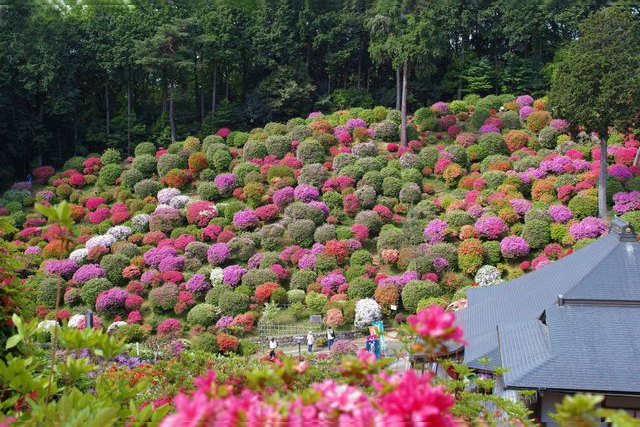Shiofune Kannon-ji Temple
menuMenu
A historic temple nestled in a nature-rich location, approximately one hour from the city center. Experience beautiful scenery throughout the seasons and visit buildings designated as Important Cultural Properties of Japan.








Highlights
- Visit the main hall, Amitabha hall, and Niomon gate, all Important Cultural Properties of Japan.
- Stroll through the beautiful temple gardens.
- Witness the azaleas in full bloom and attend the Azalea Festival in spring.
- Immerse yourself in history and nature.
- Enjoy easy access, located approximately one hour from the city center.
Basic Information
- Address
- 194 Shiofune, Ome-shi, Tokyo-to Search for tourist attractions in Tokyo
- Access
- 15 minutes by car from Higashi-Ome Station on the JR Ome Line. By Toei Bus or Seibu Bus from the north exit of Kawabe Station on the JR Ome Line. About 10 minutes from the Ome IC on the Ken-O Expressway. Show route
- Op.Hours
- 8:30 AM - 4:30 PM
- Cld.Days
- Open every day
- Fee
- Entrance Fee: Adults (Junior High School Students and above): ¥300 Children (Elementary School Students and below): ¥100 Groups (20 people or more): ¥250 Senior Citizens (75 years old and above): ¥250 ※Free admission for individuals with disability handbooks. Please present your handbook. Parking Fee: Parking fees apply during the New Year's Day Festival and Azalea Festival periods. Please check our website for details.
- INFO
- ※The temporary parking lot is unavailable after 4:00 PM due to gate closure. ※Congestion in the grounds during the Azalea Festival varies yearly. ※For pedestrian safety, the temporary parking lot is unavailable during the festival period. ※Large and medium-sized buses are not allowed on May 3rd (Example Festival Day). ※Numerous private parking lots, not managed by the temple, exist in the surrounding area. We are not responsible for any issues that may arise from using these lots. ※Please use the parking areas indicated by the Shiofune Kannon-ji Temple parking signs and attendants wearing green happi coats.
